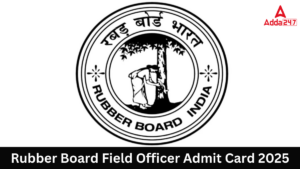Q1.EPROM is generally erased by using ______.
(a) Ultraviolet rays
(b) Infrared rays
(c) 12V electrical pulse
(d) 24V electrical pulse
(e) None of these
Q2.What does DRAM stands for?
(a) Digital Random Access Memory
(b) Dynamic Random Access Memory
(c) Dividing Random Access Memory
(d) Dynamic Recording Access Memory
(e) None of these
Q3._____ is a set of programs that are hardcoded on a chip to load into ROM at startup.
(a) BIOS
(b) BOIS
(c) BSIO
(d) BSSO
(e) None of these
Q4. Identify the volatile storage device amongst the following devices?
(a) RAM
(b) Hard disc
(c) Magnetic tape
(d) ROM
(e) None of these
Q5.Which of the following memories must be refreshed many times per second?
(a) Static RAM
(b) Dynamic RAM
(c) EPROM
(d) ROM
(e) None of these
Q6.Which memory appears to exist as main storage although most of it is supported by data held in secondary storage?
(a) Core memory
(b) Virtual memory
(c) RAM
(d) Dynamic memory
(e) None of the above
Q7.Which of the following is the highest unit of storage in computer field?
(a) Yottabyte
(b) Exabyte
(c) Terabyte
(d) Zettabyte
(e) Gigabyte
Q8.Which of the following has the smallest storage capacity?
(a) Zip disk
(b) Hard disc
(c) Floppy disc
(d) Data cartridge
(e) CD
Q9.Hard disc drives are considered __________ storage.
(a) Flash
(b) Temporary
(c) Worthless
(d) Nonvolatile
(e)Volatile
Q10.Which type of operation in the given options can be performed a CD-RW?
(a) Read and write information
(b) Read, write and rewrite information
(c) Only write information
(d) Only read information
(e) None of these
Q11.Write through technique is used in which memory for updating the data.
(a) Virtual memory
(b) Main memory
(c) Auxiliary memory
(d) Cache memory
(e) None of the above
Q12.Virtual memory allocates hard disk space to supplement the immediate, functional memory capacity of what?
(a) ROM
(b) EPROM
(c) The registers
(d) Extended memory
(e) RAM
Q13.A special, high-speed storage area within the CPU in which all data must be represented before it can be processed is called _____.
(a) BIOS
(b) Cache
(c) RAM
(d) Register
(e) None of these
Q14. _____ and _____ are the two types of computer memory.
(a) RAM and CPU
(b) ROM and CPU
(c) RAM and ROM
(d) RAM and BIOS
(e) BIOS and ROM
Q15.Main memory works in conjunction with _________.
(a) Special function cards
(b) RAM
(c) CPU
(d) Intel
(e) All of the above
Solutions
S1.Ans. (a)
Sol. EPROM is generally erased by using ultraviolet rays
S2.Ans. (b)
Sol. DRAM stands for Dynamic Random Access Memory.
S3.Ans. (a)
Sol. BIOS is a set of programs that are hardcoded on a chip to load into ROM at startup. Short for Basic Input/Output System, the BIOS is a ROM chip located on all motherboards that allows you to access and set up your computer system at the most basic level.
S4.Ans.(a)
Sol. A volatile device is a device that stores data temporarily. An example of a volatile device is RAM.
S5.Ans.(b)
Sol. dynamic RAM (DRAM), which stores bits in cells consisting of a capacitor and a transistor, DRAM have to be periodically refreshed.
S6.Ans.(b)
Sol. Virtual Memory is the memory that appears to exist as main storage although most of it is supported by data held in secondary storage, transfer between the two being made automatically as required.
S7.Ans.(a)
Sol. Yottabyte > Zettabyte > Exabyte > Petabyte > Terabyte > Gigabyte > Megabyte > Kilobyte > byte > bit.
S8.Ans.(c)
Sol. A floppy disc was a storage device that has a very small storage capacity of only 1.44 MB. Due to small storage capacity and proneness to frequent damages, floppy discs vanished from the market.
S9.Ans.(d)
Sol. Hard disc is a nonvolatile storage device, as the data that is saved on it is never lost on restart or sudden power break.
S10.Ans (b)
Sol. CD-RW (Compact Disc-Rewritable) is a digital optical disc storage format. A CD-RW disc is a compact disc that can be written, read arbitrarily many times, erased, and written again.
S11.Ans.(d)
Sol. Write through is a storage method in which data is written into the cache and the corresponding main memory location at the same time. The cached data allows for fast retrieval on demand, while the same data in main memory ensures that nothing will get lost if a crash, power failure, or other system disruption occurs.
S12.Ans.(e)
Sol. Most operating Systems support virtual memory, which allocates space on the hard disk to supplement the immediate, functional memory capacity of RAM.
S13.Ans.(d)
Sol. Register is a special high-speed storage area within the CPU where all data must be represented before it can be processed.
S14. Ans.(c)
Sol. RAM-Random Access Memory, ROM- Read Only Memory. RAM (Random Access Memory) and ROM (Read Only Memory) are types of computer memory that provide users with access to information stored on a computer.
S15.Ans.(c)
Sol. Main memory works in conjunction with CPU.
Click Here to Register for Bank Exams 2021 Preparation Material




 GA Capsule for SBI Clerk Mains 2025, Dow...
GA Capsule for SBI Clerk Mains 2025, Dow...
 The Hindu Review October 2022: Download ...
The Hindu Review October 2022: Download ...
 Rubber Board Field Officer Admit Card 20...
Rubber Board Field Officer Admit Card 20...







